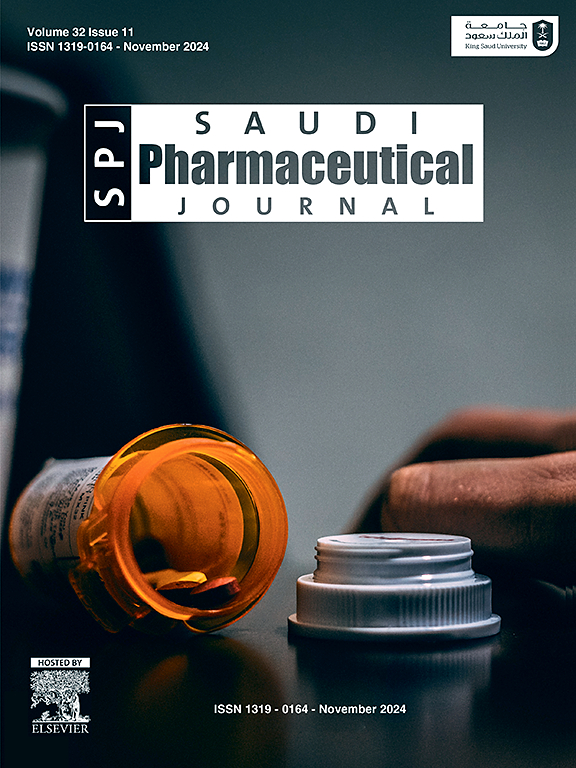Mitochondrial dysfunction and mitophagy in ADHD: Cellular and molecular mechanisms
IF 3.4
3区 医学
Q2 PHARMACOLOGY & PHARMACY
引用次数: 0
Abstract
Attention deficit hyperactivity disorder (ADHD) is a neurodevelopmental disorder characterized by persistent, age-inappropriate levels of inattention and/or hyperactive-impulsive behaviors. Previous investigations reveal that disrupted mitochondrial physiological homeostasis may contribute to ADHD. Several factors, including environmental factors, metabolic dysregulation, oxidative stress, neuroinflammation, and genetic abnormalities, can lead to mitochondrial dysfunction and impaired mitophagic pathways. Several investigations have been established a connection between mitochondrial dysfunction in ADHD and variations in monoaminergic genes, including dopamine receptors, dopamine transporters, norepinephrine transporters, serotonin transporters, and synaptic genes. The interplay between mitochondrial homeostasis and mitophagy in ADHD provides a promising research area and understating this interaction may help in the investigation of pathophysiological mechanisms and the innovation of novel therapeutic approaches to ADHD. Accordingly, this review explores previous studies that have investigated the mitochondrial abnormalities and dysfunctions in mitophagy at the cellular and molecular level in the development of ADHD.
ADHD的线粒体功能障碍和线粒体自噬:细胞和分子机制
注意缺陷多动障碍(ADHD)是一种神经发育障碍,其特征是持续的、与年龄不相称的注意力不集中和/或多动冲动行为。先前的研究表明,线粒体生理稳态的破坏可能导致ADHD。多种因素,包括环境因素、代谢失调、氧化应激、神经炎症和遗传异常,可导致线粒体功能障碍和线粒体自噬途径受损。一些研究已经建立了多动症线粒体功能障碍与单胺能基因变异之间的联系,包括多巴胺受体、多巴胺转运体、去甲肾上腺素转运体、血清素转运体和突触基因。注意缺陷多动障碍(ADHD)中线粒体稳态和线粒体自噬之间的相互作用提供了一个有前景的研究领域,了解这种相互作用可能有助于研究ADHD的病理生理机制和创新新的治疗方法。因此,本文回顾了以往在细胞和分子水平上研究ADHD发展过程中线粒体异常和线粒体自噬功能障碍的研究。
本文章由计算机程序翻译,如有差异,请以英文原文为准。
求助全文
约1分钟内获得全文
求助全文
来源期刊

Saudi Pharmaceutical Journal
PHARMACOLOGY & PHARMACY-
CiteScore
6.10
自引率
2.40%
发文量
194
审稿时长
67 days
期刊介绍:
The Saudi Pharmaceutical Journal (SPJ) is the official journal of the Saudi Pharmaceutical Society (SPS) publishing high quality clinically oriented submissions which encompass the various disciplines of pharmaceutical sciences and related subjects. SPJ publishes 8 issues per year by the Saudi Pharmaceutical Society, with the cooperation of the College of Pharmacy, King Saud University.
 求助内容:
求助内容: 应助结果提醒方式:
应助结果提醒方式:


